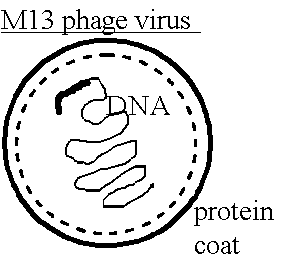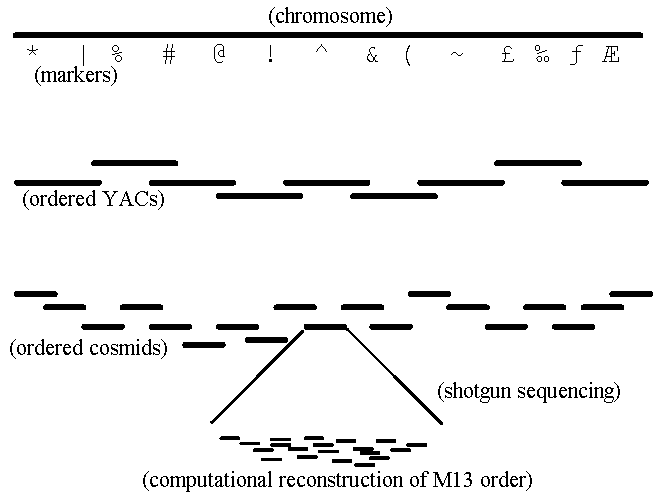
Introduction (Brian Fox)
The BAC-end strategy (Nitin Sharma)
Venter, J. C., Smith, H. O., Hood, L. (1996) "A New Strategy for Genome Sequencing." Nature 381, 364-367.
Karp, R. M., Shamir, R. (1998) "Optimizing the BAC-End Strategy for Sequencing the Human Genome." In preparation.
Human Genome Project Information http://www.ornl.gov/hgmis/
Tutorial describing genome project: http://www.genome.washington.edu/UWGC/tutorial/
Web page for Natl. Human Genome Research Inst. http://www.nhgri.nih.gov/
Database of STSs http://www.ncbi.nlm.nih.gov/dbSTS/
"Cloning" The process of taking a particular piece of DNA and inserting into another organism (bacteria, virus or yeast), which can faithfully replicate the foreign DNA.
The piece of foreign DNA can be in many sizes, depending on the biological system used.
| Vector | Insert Size (k-base) | Library Size to cover human genome |
| YAC - yeast artificial chromosome | 100-2,000 | 3,000 |
| BAC - bacterial artificial chromosome | 80-350 | 20,000 |
| Cosmid | 30-45 | 75,000 |
| Plasmid | 3-10 | 600,000 |
| M13 phage | 1 | 3,000,000 |
"Library" - A collection of clones (virus, bacteria, or yeast) which each has a different DNA sequence in their vector. A genomic library has all the human DNA (3 Gb) represented in all of the clones of the collection. A library can be cataloged/sorted/copied/distributed …
Definition: A unique DNA sequence (200-500 bp) which has been localized to one location in the genome.
Described as a "common language for physical mapping of the human genome." Olsen, et. al. Science 245 (1989) 1434.
Can use a series of STSs to identify and order clones from a library.

Overall strategy:

First 5-year plan established in 1990, revised in 1993.
Current Plan, 1998: